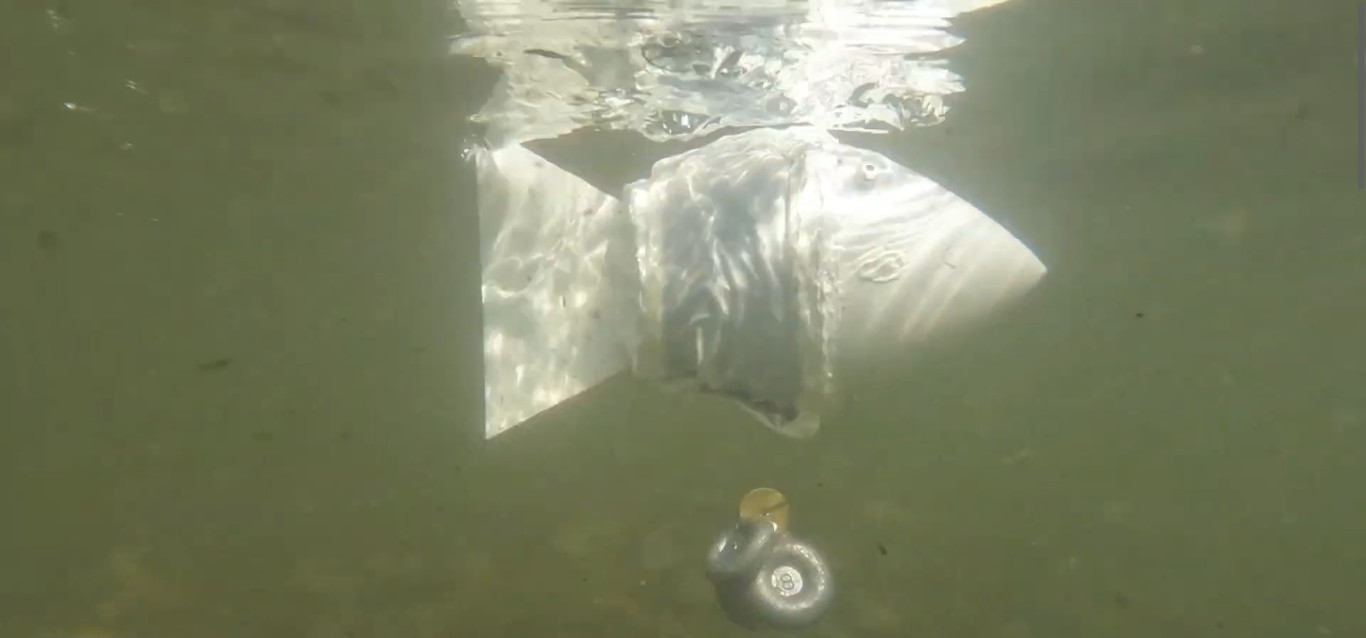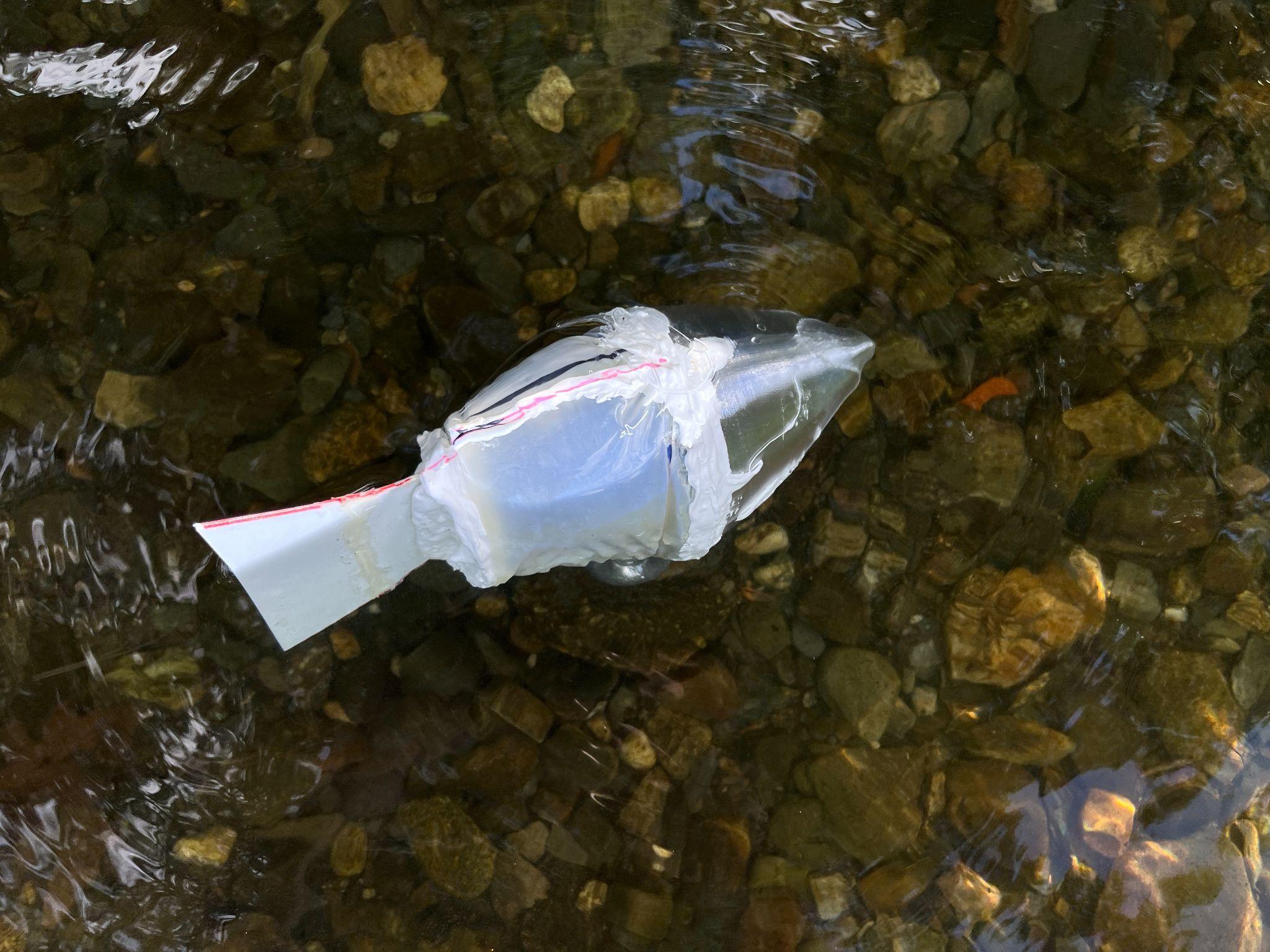
Robohub.org
Combating climate change with a soft robotics fish

Growing up in Rhode Island (the Ocean State), I lived very close to the water. Over the years, I have seen the effects of sea level rise and rapid erosion. Entire houses and beaches have slowly been consumed by the tide. I have witnessed first hand how climate change is rapidly changing the ocean ecosystem. Sometimes I feel overwhelmed by the inexorability of climate change. What can we do in the face of such a global, almost incomprehensible dilemma? The only way I can overcome this perception is by committing to doing something with my life to help, even if it’s in a small way. I think with such a big issue, the only way forward is by starting small, identifying one niche I can work in, and seeing how I can shape my research around solving that challenge.
One major challenge is rapid global ocean temperature rise. When scientists look to make climate associations using temperature data, they generally use fixed temperature loggers attached to buoys or on the ocean floor. Unfortunately, this approach discounts the area between the ocean’s surface and floor. Variable ocean conditions create microclimates, pockets of the ocean that are unaffected by general climate trends. Scientists have shown that most organisms experience climate change via these microclimates. Fish are greatly affected by this rapid increase in temperature as they can only lay eggs in a minimal range of temperatures. Microclimates are changing temperature with celerity. Hence, many species cannot adapt quickly enough to survive. At this rate, 60% of fish species could go extinct by 2100.
Of course, fish are not the only organisms affected by the rapid increase in temperature. Coral in the Great Barrier Reef can only survive in a minimal temperature threshold, and as temperature increases, reefs are experiencing mass coral bleaching. AIMS, the Australian Institute for Marine Science, the government agency that monitors the Great Barrier Reef, utilizes divers pulled behind boats to record reef observations and collect data. Unfortunately, this has led to some casualties due to shark attacks. They have begun deploying large, almost seven feet in length, ocean gliders that can mitigate this risk. These robots come with a hefty price tag of $125,000 to $500,000. They are also too large to navigate portions of the reef.
Our solution in the Soft Robotics Lab at Worcester Polytechnic Institute is building a free-swimming (tetherless), biologically inspired robotic fish, funded in part by the National Science Foundation Future of Robots in the Workplace Research and Development Program. Our goal is for the robot to navigate the complex environment of the Great Barrier Reef and record dense three-dimensional temperature data throughout the water column. Moreover, we will use non-hazardous and affordable material for the fish’s body. Since our motivation is to create a tool to use in climate research, a robot that is cheap and easy to manufacture will increase its effectiveness. Our approach is in stark contrast to traditional autonomous underwater vehicles that utilize propellers that are noisy and incongruous to underwater life. We chose to mimic the motion of real fish to reduce the environmental impact of our robot and enable close observation of other real fish.
We are, of course, not the first people to build a robot fish. In 1994, MIT produced the RoboTuna, a fully rigid fish robot, and since then, there have been many different iterations of fish robots. Some have been made of fully rigid materials like the RoboTuna and used motors that run the caudal tail (rear fin) actuation that powers the fish. However, this does not replicate the fluid motion achieved by real fish as they swim. A possible solution would be to use soft materials. Designs using soft materials, up to this point, utilize a silicone, pneumatically or hydraulically actuated tail. Unfortunately, these robots cannot operate in rough environments since any cuts or abrasions to the silicone could cause a leak in the system and lead to a total failure in the actuation of the tail. Other robots have combined the more durable rigid materials, actuated with cables, and then attached a soft silicone end that bends with the force of the water. All these previous robots are difficult to manufacture and require institutional knowledge to recreate.

MIT Robotuna and MIT SOFI robots
We have fabricated a 3D printed, cable-actuated wave spring tail made from soft materials that can drive a small robot fish. The wave spring gives the robot its biologically inspired shape, but it can bend fluidly like the silicone-based robots and real fish. The wave springis entirely 3D printed from a flexible material that is affordable and easy to use. This material and method creates a very soft yet durable robot, withstands harsh treatment, and runs for hundreds of thousands of cycles without any degradation to any of the robot’s systems. The robot sets itself apart by being very easy to assemble, with only a handful of parts, most of which can be 3D printed.
The wave spring itself has a biologically inspired design. Reef fish are morphologically diverse but share a similar body shape which we emulate with a tapered oval design. The wave spring itself is composed of a mesh of diamond-shaped cells that can compress and bend. To restrict our robot to only lateral bending, we added supports down the dorsal and ventral edges of the wave spring.

Using this design, we have successfully created a robot fish. The robot is able to swim freely in a fish tank, swimming pool, and in a lake. While testing the fish in these environments, we found that the speed and performance of our robot was comparable to other fish robots operating under similar parameters. In order to waterproof the robot (to protect the electronics required for tetherless swimming), we had to add a latex skin. This does increase the manufacturing complexity of the design, so we will look to improve not only the robot’s performance, but also its design to ensure a simplistic yet high functioning robot.
Most importantly, we will add the sensors required to collect data like temperature, which is imperative to a better understanding of the oceans’ rapidly changing microclimates. It’s crucial that we remain focused on this goal, as it drives not only the robot’s design, but our motivation for why we do this work. Climate change is the foremost crisis facing our world. I encourage everyone to connect their interests and work, no matter the field, in some way to this issue as we are the only ones who can do something about it.
tags: bio-inspired, c-Research-Innovation




